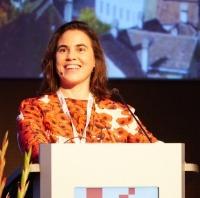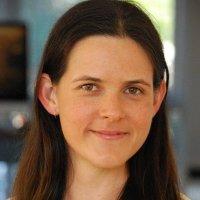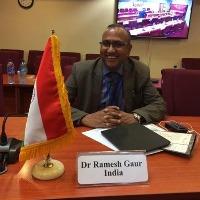Blog
Unless otherwise stated, content is shared under CC-BY-NC Licence
Dear IFI Irish Film Archive of five years ago
Kasandra O’Connell is Head of the IFI Irish Film Archive in Dublin, Ireland
Dear IFI Irish Film Archive of five years ago,
I know you are filled with trepidation at the sudden need for the IFI Irish Film Archive to preserve Ireland’s digital moving image heritage alongside your analogue collections. The switch to digital formats within the film and broadcasting sector in Ireland has been sudden, encouraged by a government sponsored scheme enabling cinemas to change from analogue to digital exhibition. This has left you with no option but to take in digital material as part of your preservation agreements with the two main funders of moving image production in Ireland, the Broadcasting Authority of Ireland and the Irish Film Board. Starting from scratch is scary. No one on your small team has an IT background, you haven’t the necessary equipment and infrastructure to deal with digital deliveries and the thought of making preservation format decisions or developing digital polices is so alien at the moment that it induces a cold sweat. I’m here to give you some reassurance. Five years from now the IFI Irish Film Archive will have made more progress in this area than you could have possibly imagined. While there is a still a lot to do and there are many challenges ahead, the team have accomplished a huge amount in a short time and the archive as you now know it is unrecognisable.
Preserving digital cultural heritage: Better together!
Barbara Signori is Head of e-Helvetica at the Swiss National Library, Bern.
The Swiss National Library has a mandate to collect, catalogue, store and disseminate the cultural heritage created in Switzerland and abroad by and about the Swiss. This sounds like a clear enough mission, but dig deeper and this mandate raises all sorts of tough questions especially in a digital world.
First of all, what is digital cultural heritage? Obviously it goes far beyond e-books and e-journals, it includes Swiss websites, newsletters of Swiss societies, and so on. But what about all the digital data that is created by Swiss people every minutes of every day? The selfies, blogs, tweets, social media, personal digital archives. I’m sure that not everything can or should be considered cultural heritage. But who decides what is and what isn’t?
Frisch’s speech in Hamburg and what it tells us about radio archiving
Brecht Declercq is Secretary-General of FIAT/IFTA, Digitisation Manager at VIAA
Hamburg, Germany, almost day on day 40 years ago. Swiss writer Max Frisch, at age 66, went to great lengths to travel from his hometown Berlin to Hamburg. He has accepted to give a speech at the SPD party congress in Hamburg. Frisch has had a good relationship with prominent German Social Democrats such as Willy Brandt and Chancellor Helmut Schmidt for years and the speech may be regarded as a friends service. The party congress is known as "the day the Chancellor asked the poets for advice" - Günther Grass is also present - and takes place in the midst of what the Germans call the German Autumn: a period of far left attacks and kidnappings, from Germans, against Germans. The speech of Max Frisch is a benchmark, even a crisis. To the German Social Democrats Frisch will point out their social democratic responsibility, also as a government party, and also in times when the street's call for severe repression against the very young RAF terrorists sounds particularly loud.
We need to talk about copyright
Susan Reilly is Director of Digital Library, Licencing & Copyright at Qatar National Library, Doha
With a European Parliament vote on copyright reform looming it’s worth taking a look at the relationship between digital preservation and copyright law and why we need copyright reform at international level to help ensure the preservation of the digital cultural and scientific record.
You don’t need to be a lawyer to figure out that one of the biggest challenges facing digital preservation today is copyright. Digital preservation usually necessitates the making of several copies, shifting formats or making derivative works, circumvention of technical protection measures, not to mention making available. Each one of these acts can require an exception and limitation in copyright law.
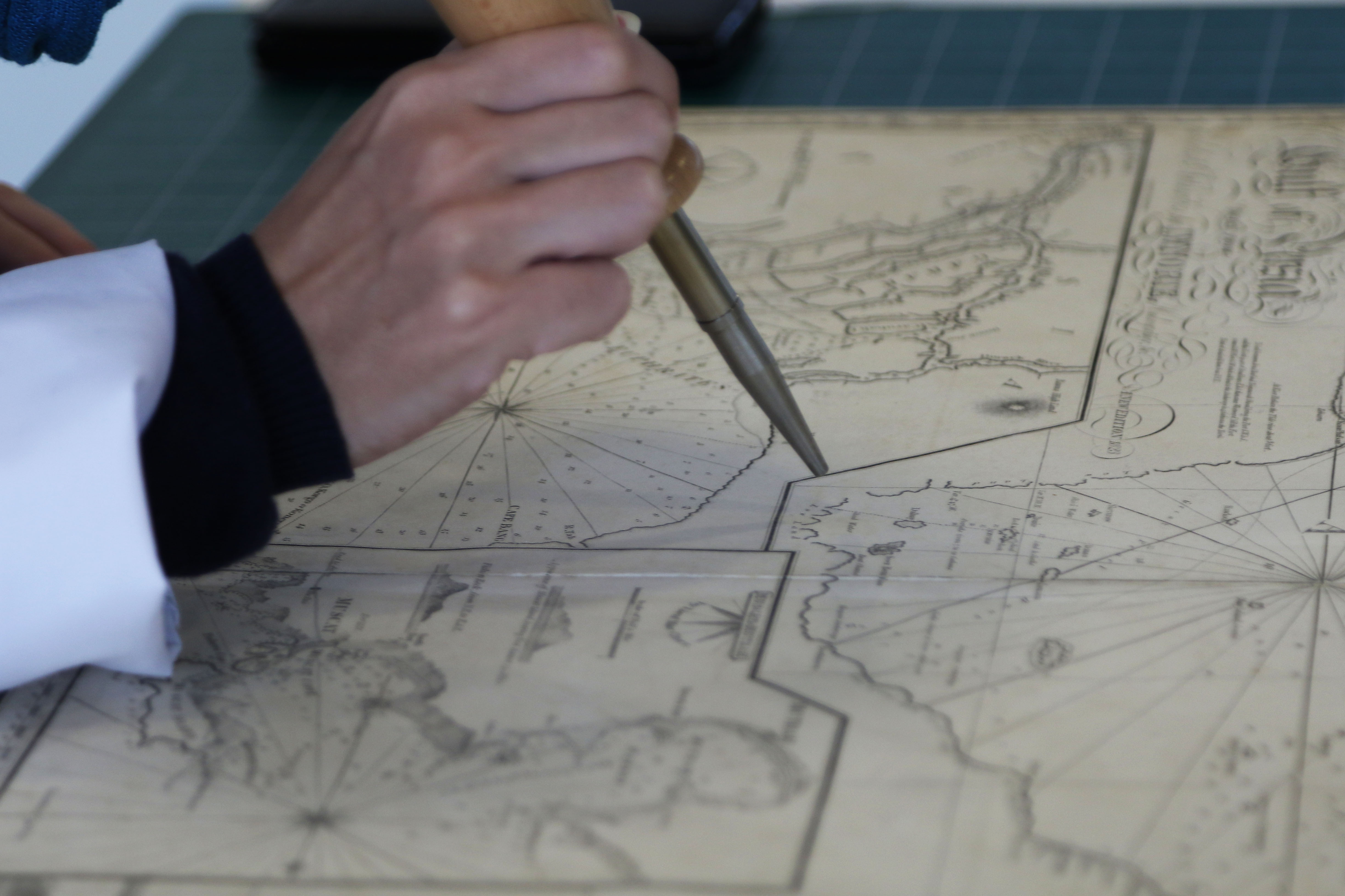
Possibly one of the least discussed aspects of the current proposal for an EU Directive on Copyright in the Digital Single Market is Article 5 on the preservation of cultural heritage, which introduces a mandatory exception to the right of reproduction allowing cultural heritage institutions to make copies of items (in any format) in their collection for the purpose of preservation. This article recognises the fact that a single copy is not sufficient for digital preservation and that it is necessary to multiple copies. It also allows for format shifting. The proposed directive also has a provision on technical protection measures but does not go far enough in providing a mechanism for recourse should rights owners not cooperate in allowing cultural heritage institutes to circumvent these measures for the purpose of preservation.
1997-2007: the main challenge after two decades of digital preservation research is the weakness of the professional and institutional networks
Maria Guercio is President of Associazione nazionale archivistica italiana
The main challenge after two decades of good research is the weakness of international and national professional and institutional networks with reference to the capacity of sharing knowledge and solutions.
It is a paradox that in the modern society, interconnected by definition, the international community involved in digital preservation (more robust and interrelated than other professionals and rich of two decades of good research and experience) does not have planned tools and communication channels strong enough to play with continuity its role with success. In fact and indeed, the networked digital world is more fragmentary than in the past, while the archival heritage can survive for future only if our professional and institutional community will be able to put in place a long-term program of research and a stable cooperation framework. The relations we have to create and maintain could be able to re-enforce our capacity of identifying and improve solutions by cooperating and sharing our experiences, our successful achievements, but also our failures.
The lack of continuity and the increasing isolation of the stakeholders is the most critical aspect of the whole sector, but the international funding and coordinating bodies do not seem to be aware of this. For instance, this factor has seriously weakened the European effort in this area and prevented the completion of ambitious and promising projects and implementation plans, at the point that no robust programs for funding preservation projects are in place within Horizon 2020 and no coordination is available to discuss and compare the models developed in the European countries. A similar attitude is present in the ICA initiatives where a temporary group of expert has been created for handling with digital records (DREG, http://www.ica.org/en/our-professional-programme/expert-group-digital-records-dreg), but no resources are available neither for events nor for meetings.
Fifteen years with digital preservation
Zhenxin Wu is Professor of the Information System Department and Deputy Director of the Digital Preservation Center of Chinese Academy of Sciences at the National Science Library in Beijing, China
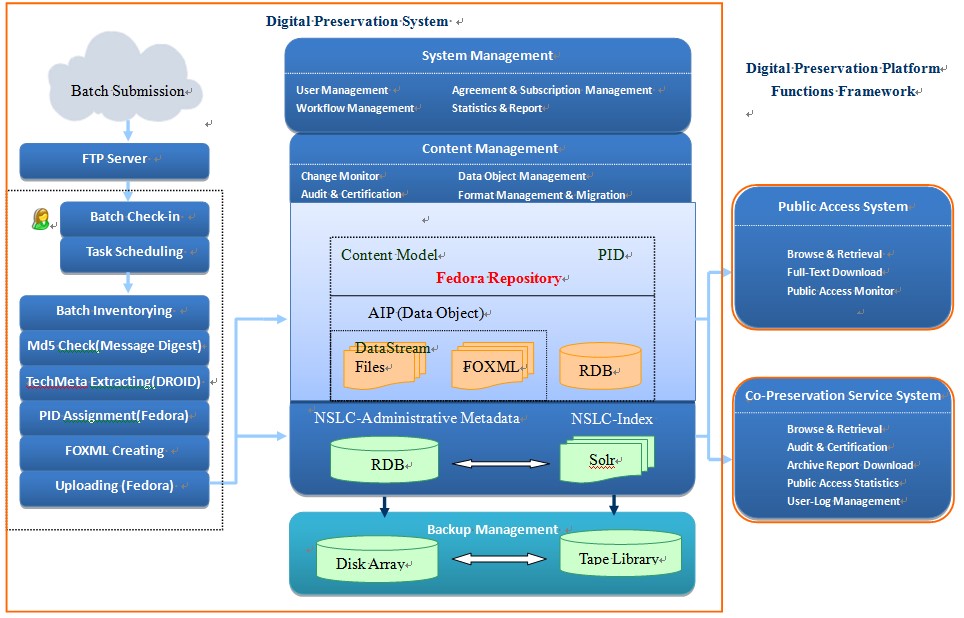
与长期保存共同成长的十五年
长期保存对我而言,是我研究生涯的开始,之前我是一个图书馆系统程序员。2003年,张晓林教授找到我,希望我能参与斯坦福大学图书馆的一个项目协助做些事情,也就是日后很成功的LOCKSS项目。出于对这所著名大学的敬仰,我立刻就答应下来。从配合LOCKSS项目在中国北京建立一个测试节点开始,我逐步了解了数字资源长期保存的内涵,以及这项工作的重要意义,并产生了浓厚的兴趣。2004年,在北京作为工作人员参加组织了第一届数字资源长期保存国际会议(iPRES),目前iPRES已成为长期保存领域最有影响力国际会议。2005年Neil Beagrie先生介绍我到英国数字保管中心(DCC)作高级访问学者,在爱丁堡,我学习到很多新东西,也看到很多新思想的碰撞,结识了很多长期保存领域的专家。
回到北京后,在中国科学院的资助下,我开始从事电子出版物的长期保存研究和试验,对文件格式管理、fixity check,起源信息管理,数据迁移,以及可信赖审计与认证等进行了深入的研究,与团队一起开发了基于Fedora的电子期刊存档试验系统,并致力国家层面的宣传呼吁。
图1.电子期刊存档试验系统功能框架
PERSIST: A Global Dialogue on Digital Preservation
Robert Buckley works for the National Archives of the UAE in Abu Dhabi
PERSIST: A Global Dialogue on Digital Preservation
To those unfamiliar with PERSIST, it is a project within the UNESCO Memory of the World Programme, whose International Advisory Committee is currently chaired by Dr. Abdulla Alraisi, Director General of the National Archives of the UAE. The Memory of the World (MoW) Programme was created in 1992 to facilitate preservation of the world’s documentary heritage and to assist in providing universal access to it.
When my colleague Hamad Al Mutairi, Director of the Archives Department here at the National Archives of the UAE, and I first sat down to discuss this contribution, he drafted the outline of a general digital preservation policy. We realize that having a policy for digital preservation or digital continuity is not a unique thing; numerous institutions have one already, suitably adapted to the environment in which they operate. What is different is that the effort here is partly stimulated by our participation in the PERSIST project.
The PERSIST project is essentially a digital component of the MoW programme. It is an outgrowth of the The Memory of the World in the Digital age Conference held in Vancouver in 2012. PERSIST aims to address the challenges of long-term digital preservation and the risks of losing access to part of our digital heritage. Partnering with UNESCO on PERSIST are the International Council of Archives (ICA) and the International Federation of Libraries Associations and Institutions (IFLA).
Building blocks of digital preservation in India
Dr. Dinesh Katre is Associate Director and Head of Department at the Centre for Development of Advanced Computing (C-DAC) in Pune, India
It is a matter of great pride for me to have associated myself with the global cause of preserving information in digital era. I wish to congratulate the team of Digital Preservation Coalition (DPC) for taking this initiative to celebrate International Digital Preservation Day (IDPD)! This can be a very effective tool for creating awareness about rampant digital obsolescence among general public.
We have been working on digital preservation in India since 2009. I take this opportunity to present an overview of “Centre of Excellence for Digital Preservation”, the flagship project undertaken as part the National Digital Preservation Programme sponsored by Ministry of Electronics and Information Technology, Government of India. The Centre of Excellence of Digital Preservation is established at C-DAC, Pune, INDIA. Being the Principal Investigator (PI) of this project, I would like to share information on major outcomes of this project.
Digital Preservation at the University of Melbourne
Jaye Weatherburn is Digital Preservation Officer at the University of Melbourne
Background
Three years ago, at the September 2014 meeting of Academic Board at the University of Melbourne, the Digital Preservation 2015–2025: Strategy[i] and Implementation Roadmaps[ii] were endorsed. By early 2016 the Digital Preservation Project team had formed and commenced the “Establishment phase” towards implementing the Strategy. A central aim of the Strategy is to establish a university ecosystem of repositories with the capability to archive, preserve and provide ongoing access to the university’s digital assets.
The project has survived and thrived through a large-scale university restructure, and significant resourcing challenges, thanks to the ongoing dedication of the library Research & Collections team at the university, led by Donna McRostie.
Digital Preservation of Indian Cultural Heritage: Issues and Challenges
Dr. Ramesh C Gaur works at the Jawaharlal Nehru University
At the outset, let me congratulate all on initiating 30th November as the International Digital Preservation Day (IDPD17).
My introduction to digital preservation started in 2005 when I visited Germany with the support of Max Mueller Bhawan. My three-week stay, one week each at Belfield University, Belfield; German National Library Frankfurt; and State Gottingen University Library, Gottingen; provided me opportunity to closely study some of the digital preservation initiatives in Germany in particular and in Europe in general. The interaction with researchers working at project like NESTOR, KOPOL, and REUSE, etc., helped me in learning the basics of digital preservation. After coming back from Germany, I shared my experience in the form of various lectures delivered at various national and international conferences in India. Since then, digital preservation is one of the prime area of my interest.
Digital preservation is a process of preserving both digitized and born-digital contents to a distant future in reusable condition for access by its users. It involves a set of systematic guidelines, processes, strategies, technology and approaches.' The technological obsolescence, shorter and uncertain life-period for current storage media, information glut, and internet revolution are some of the major factors which have made preservation of digital information more complex and challenging. Being a librarian, preservation for access is key to my thought process.














































































































































